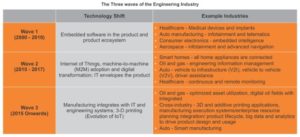What is the Significance of 5D BIM in Construction Industry?
BIM is significant to enhance the productivity of architects, managers, and contractors during the construction phase. Furthermore, the people involved in the construction industry could not miss out to what they can get out of BIM.
The pre-construction phase involves owners and architects discussing the design, infrastructure and several changes required in the existing model. Therefore, the discussion takes place over the rough sketch which is ineffective to determine the real requirements and cannot fill the gap between conceptual design and final one. Relating cost data for estimating the cost and similar planning is called 5D BIM. The cost includes purchasing, installing, running, and renewal cost. 5th Dimension BIM (Building Information Modeling) is efficient and will help in extracting information from BIM ready virtual building models.
It is imperative to observe that pre-construction time involves unplanned, insufficient information that could stretch the time taken for construction and increases cost. Nevertheless, pre-construction time and developing of design is very important as it is about meeting the requirements of the owner, cost estimates and completing the project efficiently. 5D BIM will support the object of owners, architects, builders, and engineers to build the design and carry out cost estimation process more effectively.
Here are more benefits of 5D BIM for the construction industry:
- When information related to exact scheduling of each activity and cost is easily available then contractors cannot miss any deadline. Reworks are minimized and each worker is aware of his/her work that led to the completion of the project on time.
- Since cloud technology is added to BIM, contractors and project managers will be able to access data anywhere and convey it to subordinates for the changes in design or plan.
- Making alterations in the information according to project requirements is possible with 5D BIM. Extracting of meaningful and reliable information is the objective to avoid any discrepancy.
- The proper allocation of information in graphs and data sheets helps managers and owners to utilize the information and meet the schedule on time. Therefore, every equipment is put to definite use in the right manner and increases the efficiency of all the resources.
5D BIM fits perfect for design-build delivery as it can retrieve the building components from the built models and put in comparison against current cost structure. This feature will help in saving a lot of time spent on calculating entire project cost. In addition, when single equipment is eliminated or replaced, the revised cost will appear automatically.
Conclusively, with all the requirements lined up, 5D BIM is a profound intelligent to win projects and optimize pre-construction work phase. The highly informative rich intelligent models of BIM are upright means to display features, commitments, facts & figures, and any loopholes. Thus, owners, engineers, architects, and contractors are sure to benefit by the most befitting BIM Model in the construction industry.
A brief History behind BIM
The term BIM emerged in the Architecture, Engineering and Construction industry back in the year 1987. Building industry executive, Phil Bernstein was the first to use this tool when he was working for Autodesk- an American multinational corporation that focused on 3D design software. Furthermore, the term BIM became popular with the help of industry analyst Jerry Laiserin as a tool for digital representation in the building industry. As the tool was observed with some exceptional and winning characteristics, Laiserin emphasized BIM as the description for the next generation of design software loaded with the powerful features as CAD tool to generate reasonably clear and technically advanced commercial approaches. BIM also gained popularity as Autodesk was already using this as a building industry strategy.
Moreover, BIM became extremely popular because of its hi-end features and accuracy in generating technical and commercial building designs. This is probably the reason why BIM is used across the world. Several organizations across the globe offer guidance about the best practices for the BIM technology meeting industry standards motivating professionals to use it.






